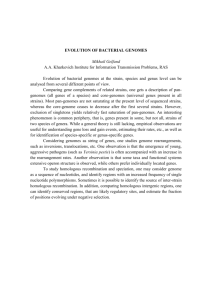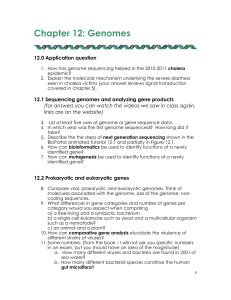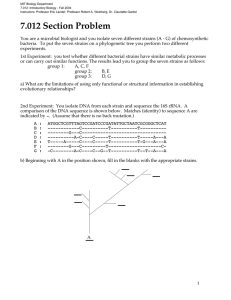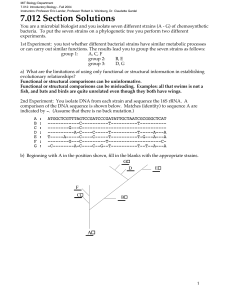Why develop your own adaptations when you can appropriate them
advertisement
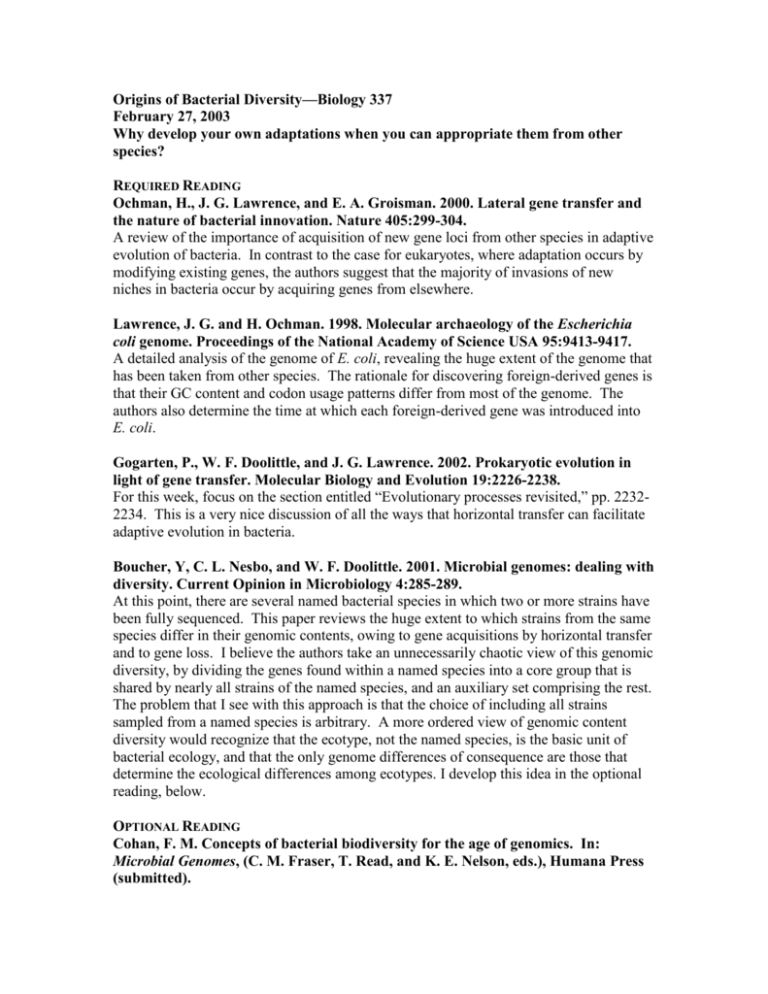
Origins of Bacterial Diversity—Biology 337 February 27, 2003 Why develop your own adaptations when you can appropriate them from other species? REQUIRED READING Ochman, H., J. G. Lawrence, and E. A. Groisman. 2000. Lateral gene transfer and the nature of bacterial innovation. Nature 405:299-304. A review of the importance of acquisition of new gene loci from other species in adaptive evolution of bacteria. In contrast to the case for eukaryotes, where adaptation occurs by modifying existing genes, the authors suggest that the majority of invasions of new niches in bacteria occur by acquiring genes from elsewhere. Lawrence, J. G. and H. Ochman. 1998. Molecular archaeology of the Escherichia coli genome. Proceedings of the National Academy of Science USA 95:9413-9417. A detailed analysis of the genome of E. coli, revealing the huge extent of the genome that has been taken from other species. The rationale for discovering foreign-derived genes is that their GC content and codon usage patterns differ from most of the genome. The authors also determine the time at which each foreign-derived gene was introduced into E. coli. Gogarten, P., W. F. Doolittle, and J. G. Lawrence. 2002. Prokaryotic evolution in light of gene transfer. Molecular Biology and Evolution 19:2226-2238. For this week, focus on the section entitled “Evolutionary processes revisited,” pp. 22322234. This is a very nice discussion of all the ways that horizontal transfer can facilitate adaptive evolution in bacteria. Boucher, Y, C. L. Nesbo, and W. F. Doolittle. 2001. Microbial genomes: dealing with diversity. Current Opinion in Microbiology 4:285-289. At this point, there are several named bacterial species in which two or more strains have been fully sequenced. This paper reviews the huge extent to which strains from the same species differ in their genomic contents, owing to gene acquisitions by horizontal transfer and to gene loss. I believe the authors take an unnecessarily chaotic view of this genomic diversity, by dividing the genes found within a named species into a core group that is shared by nearly all strains of the named species, and an auxiliary set comprising the rest. The problem that I see with this approach is that the choice of including all strains sampled from a named species is arbitrary. A more ordered view of genomic content diversity would recognize that the ecotype, not the named species, is the basic unit of bacterial ecology, and that the only genome differences of consequence are those that determine the ecological differences among ecotypes. I develop this idea in the optional reading, below. OPTIONAL READING Cohan, F. M. Concepts of bacterial biodiversity for the age of genomics. In: Microbial Genomes, (C. M. Fraser, T. Read, and K. E. Nelson, eds.), Humana Press (submitted).


